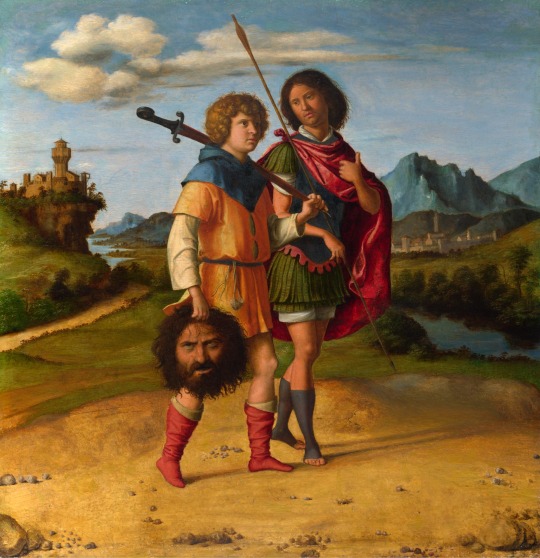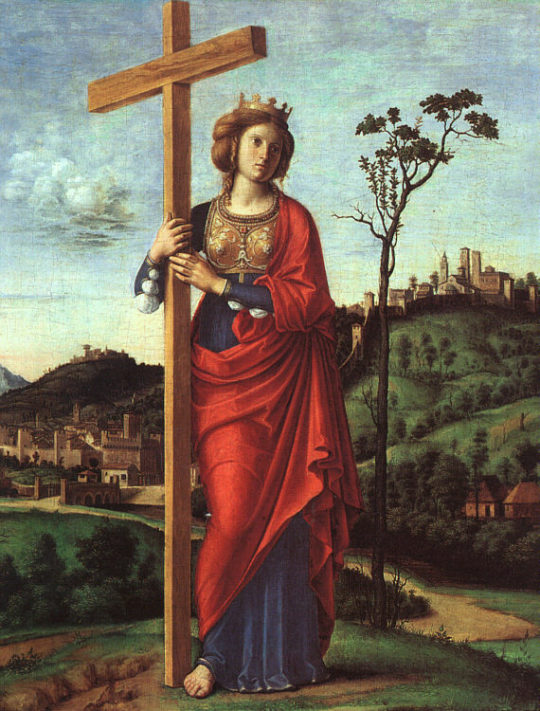#Cima da Conegliano
Explore tagged Tumblr posts
Text

Giovanni Battista Cima, also called Cima da Conegliano / "Saint Sebastian" / ab. 1500-1502 / Musée des Beaux-Arts de Strasbourg
95 notes
·
View notes
Text

Cima da Conegliano
56 notes
·
View notes
Text

source : @cheminer-poesie-cressant
Le désespoir est l'appel précédent la grandeur ; heureux celui qui sait sans perdre pied se recueillir à sa source.
(Dans la portée des ombres, extrait)
© Pierre Cressant
(Mercredi 19 octobre 2005)
#poésie#poésie en prose#poème#sentence#aphorisme#french poetry#poème en prose#poètes sur tumblr#dans la portée des ombres#désespoir#grandeur#poésie contemporaine#art photography#photographers on tumblr#joie#art painting#cima da conegliano
30 notes
·
View notes
Text

David and Jonathan by Cima da Conegliano
#david#jonathan#art#cima da conegliano#giovanni battista cima#renaissance#friends#friendship#david and goliath#israelite#israelites#israel#goliath#head#landscape#biblical#bible#christianity#christian#religion#religious art#arrow#sword#castle#town#fortress#mountains#mountain#europe#italy
76 notes
·
View notes
Text

Cima da Conegliano - Virgin and Child. 1485 - 1486
34 notes
·
View notes
Text

#peoplematchingartworks#cima da conegliano#gemaeldegalerie#stefandraschan#photography#contemporaryart#berlin
31 notes
·
View notes
Text

koredzas
Cima da Conegliano - The Annunciation. 1500
10 notes
·
View notes
Photo

Thronende Madonna mit Kind und Heiligen Petrus, Romualdus, Benedikt und Paul von Cima da Conegliano
Öl auf Holz, 1495
#Cima da Conegliano#christentum#religion#glaube#kunst#gemälde#meisterwerk#kunstdruck#museum#galerie#kunstwerk#kirche#church#holy petrus#petrus#holy#child#madonna#jesus#christ#oil on wood
17 notes
·
View notes
Text

Cima da Conegliano, Sacra Conversazione/The Rest on the Flight into Egypt
Museu Calouste Gulbenkian, Lisbon
2 notes
·
View notes
Text

CIMA da Conegliano St Helena c. 1495 Oil on panel, 40 x 32 cm National Gallery of Art, Washington
97 notes
·
View notes
Text

David and Jonathan - Giovanni Battista Cima da Conegliano, 1510
30 notes
·
View notes
Text

Giovanni Battista Cima da Conegliano
#giovanni battista cima da conegliano#christ#art#artwork#fine art#fineart#painting#art history#history of art
24 notes
·
View notes
Text

The Baptism of Christ: Giovanni Battista Cima da Conegliano, c. 1493-4.
44 notes
·
View notes
Text

La bendición de Cristo.
Cima da Conegliano, Giovanni Battista (1459/60–1517/18) -
14 notes
·
View notes
Text

Cima da Conegliano - Wedding of Bacchus and Ariadne. Detail. 1504
48 notes
·
View notes
Text

Adding to both the Birth and Death of Christ, we have God the Frogger
[Based on God the Father by Cima da Conegliano circa 1510-1517]

#smiling friends#art#digital art#beauty#love#poetry#power#mr. frog#smiling friends mr. frog#he's actually god#sorry
8 notes
·
View notes